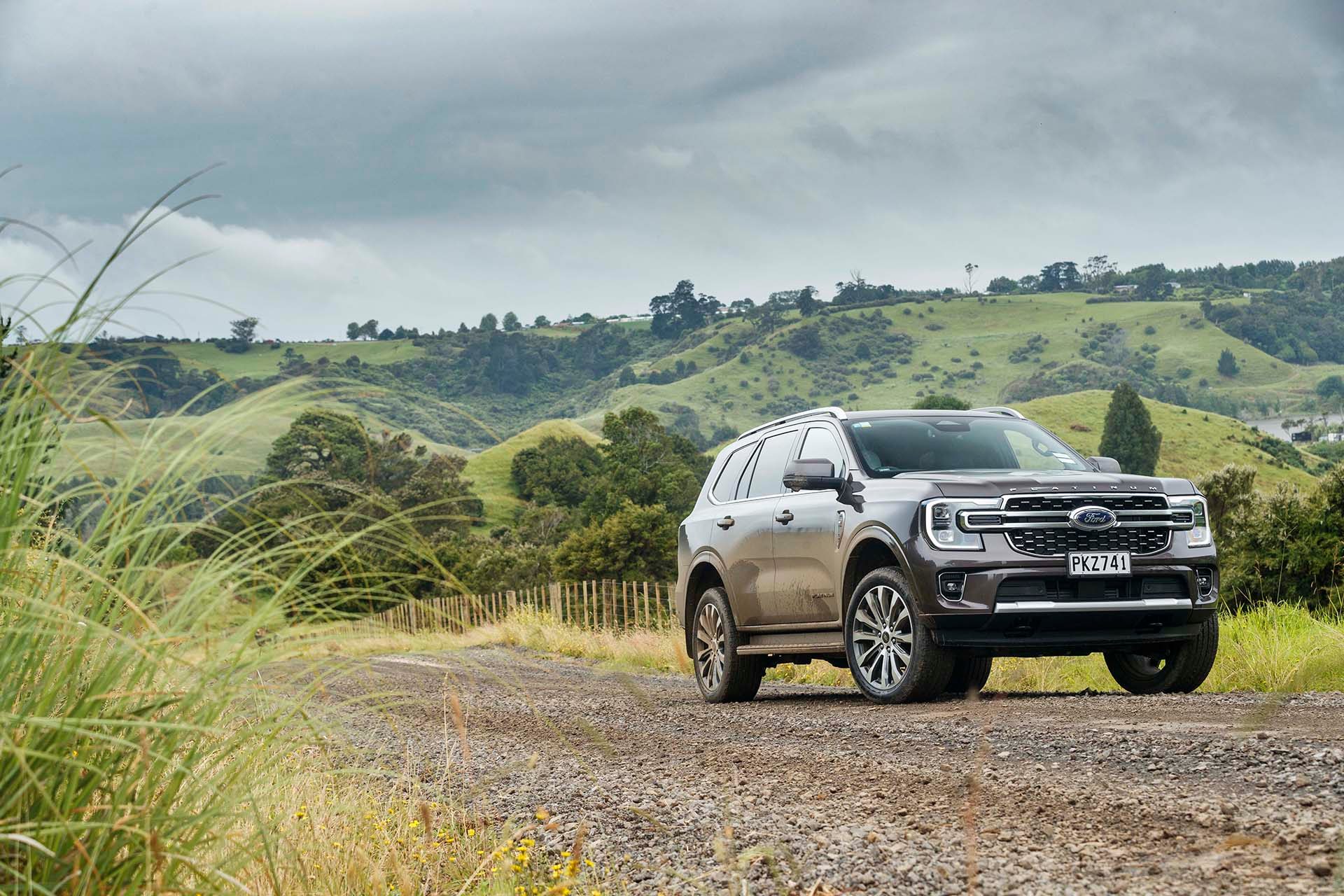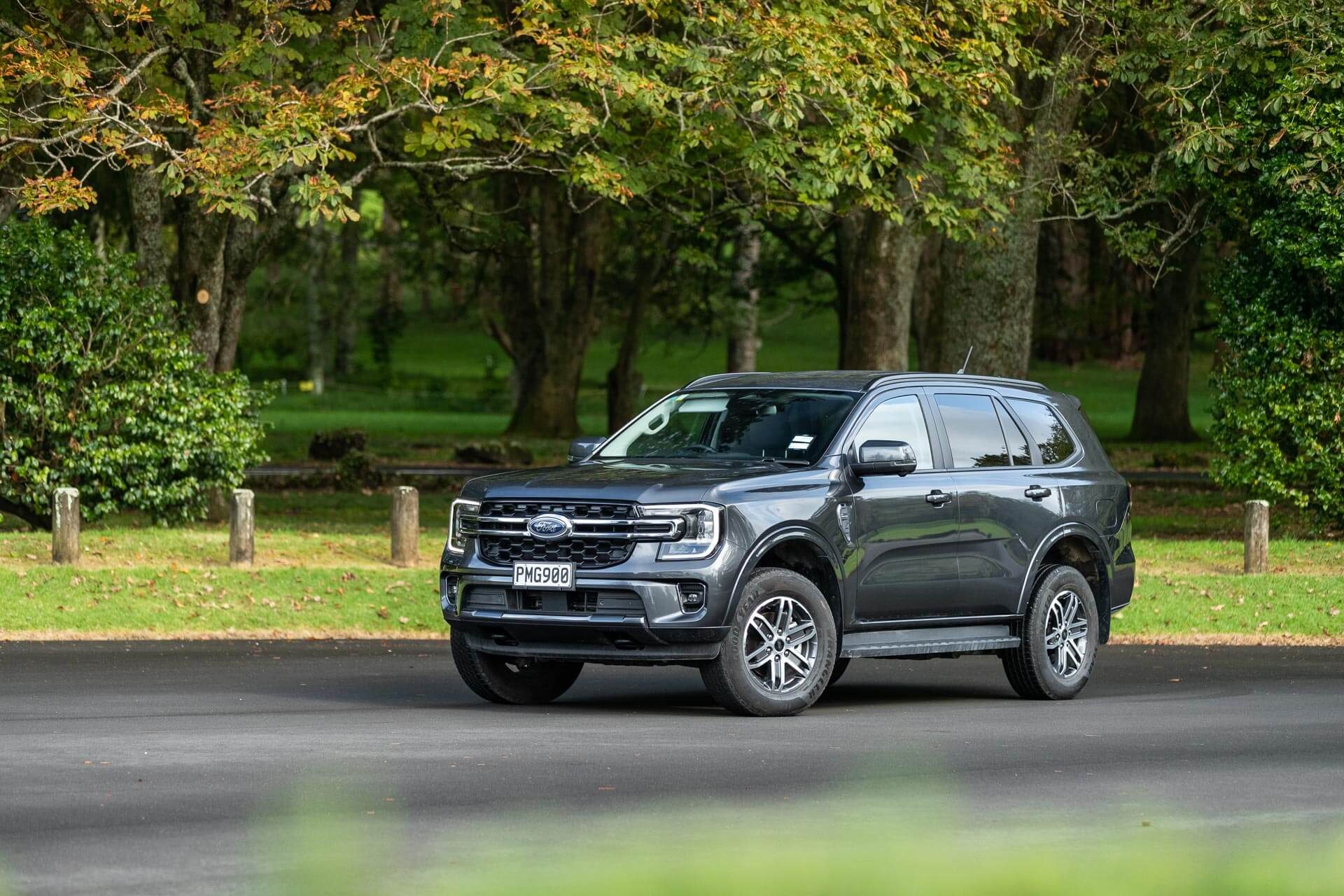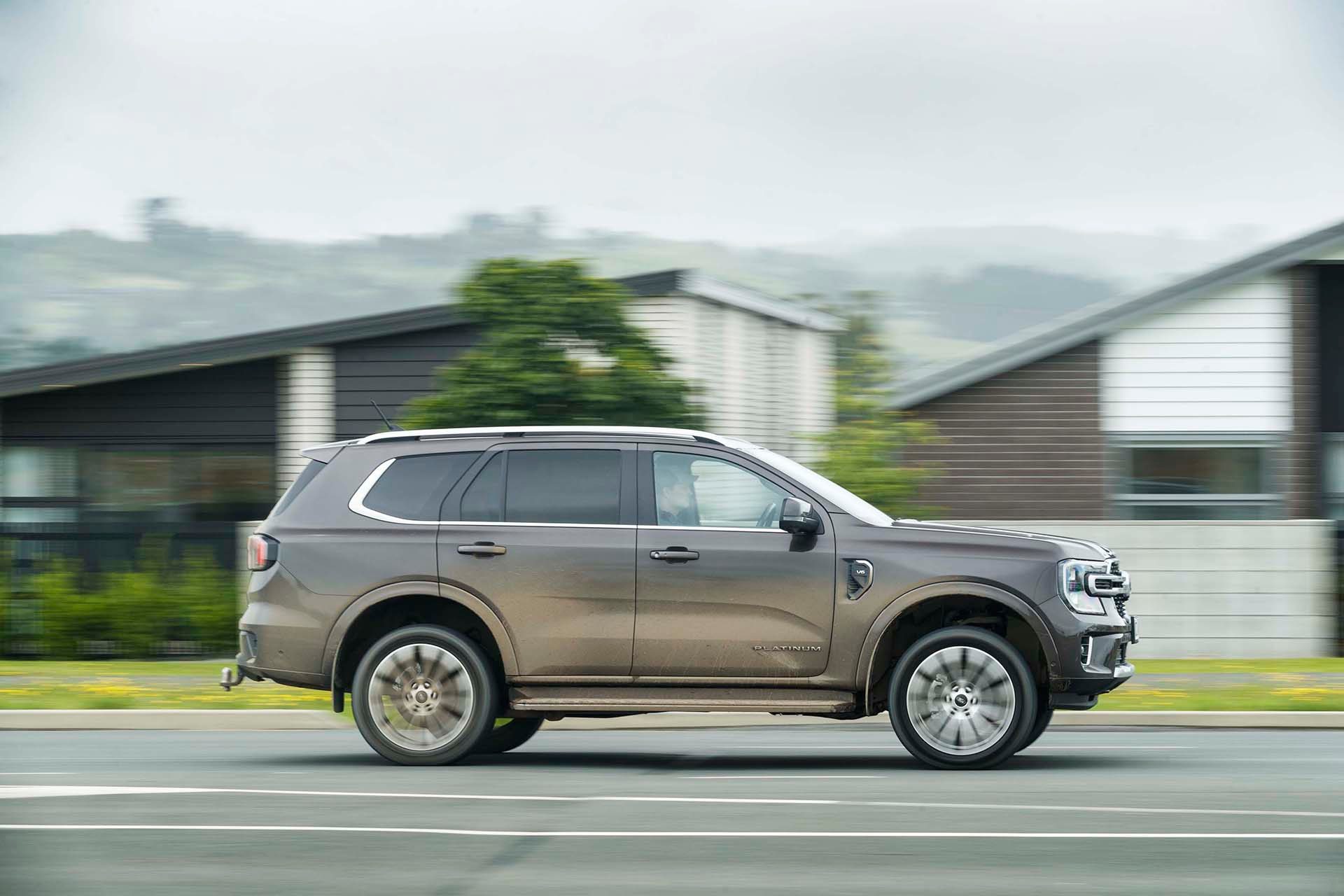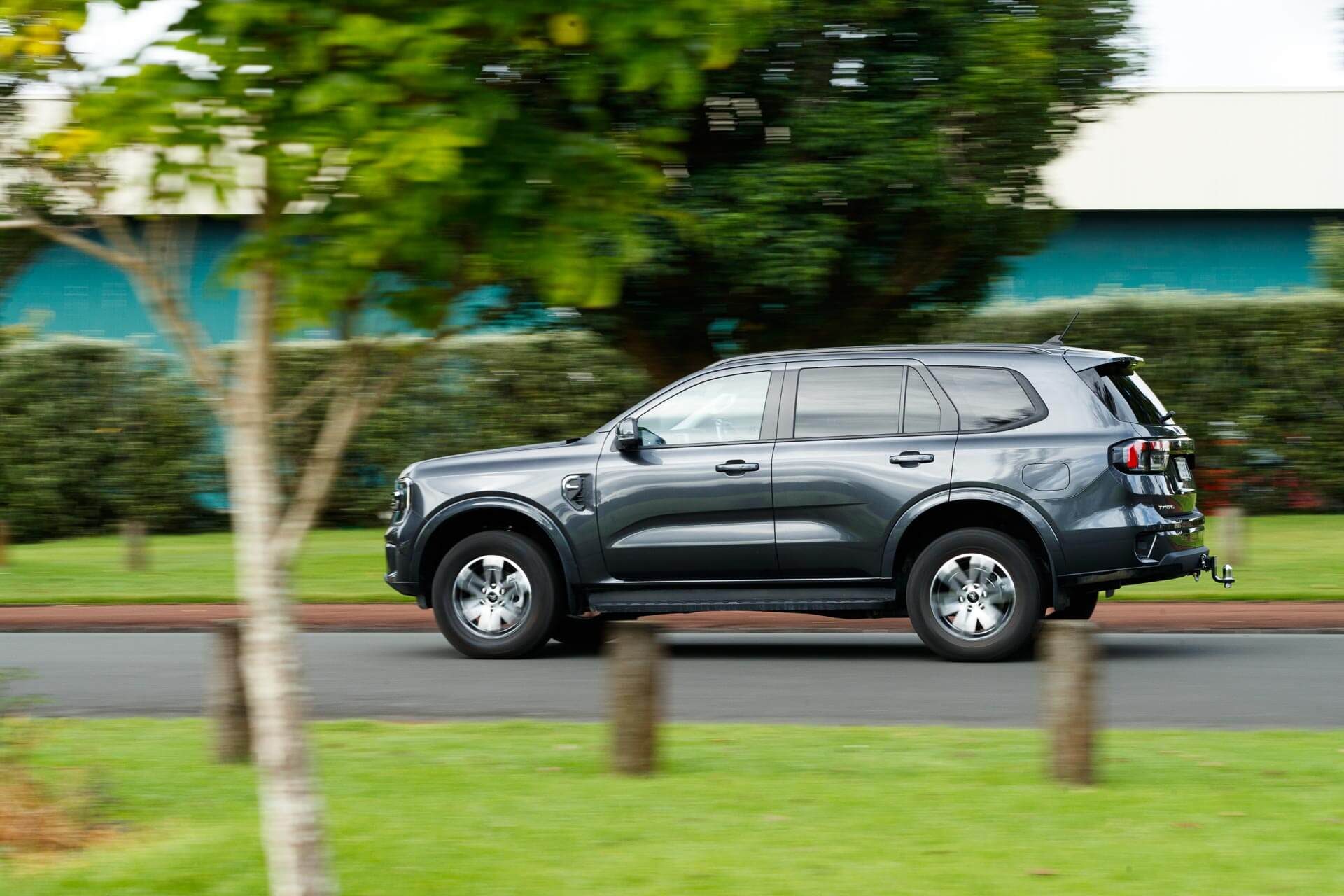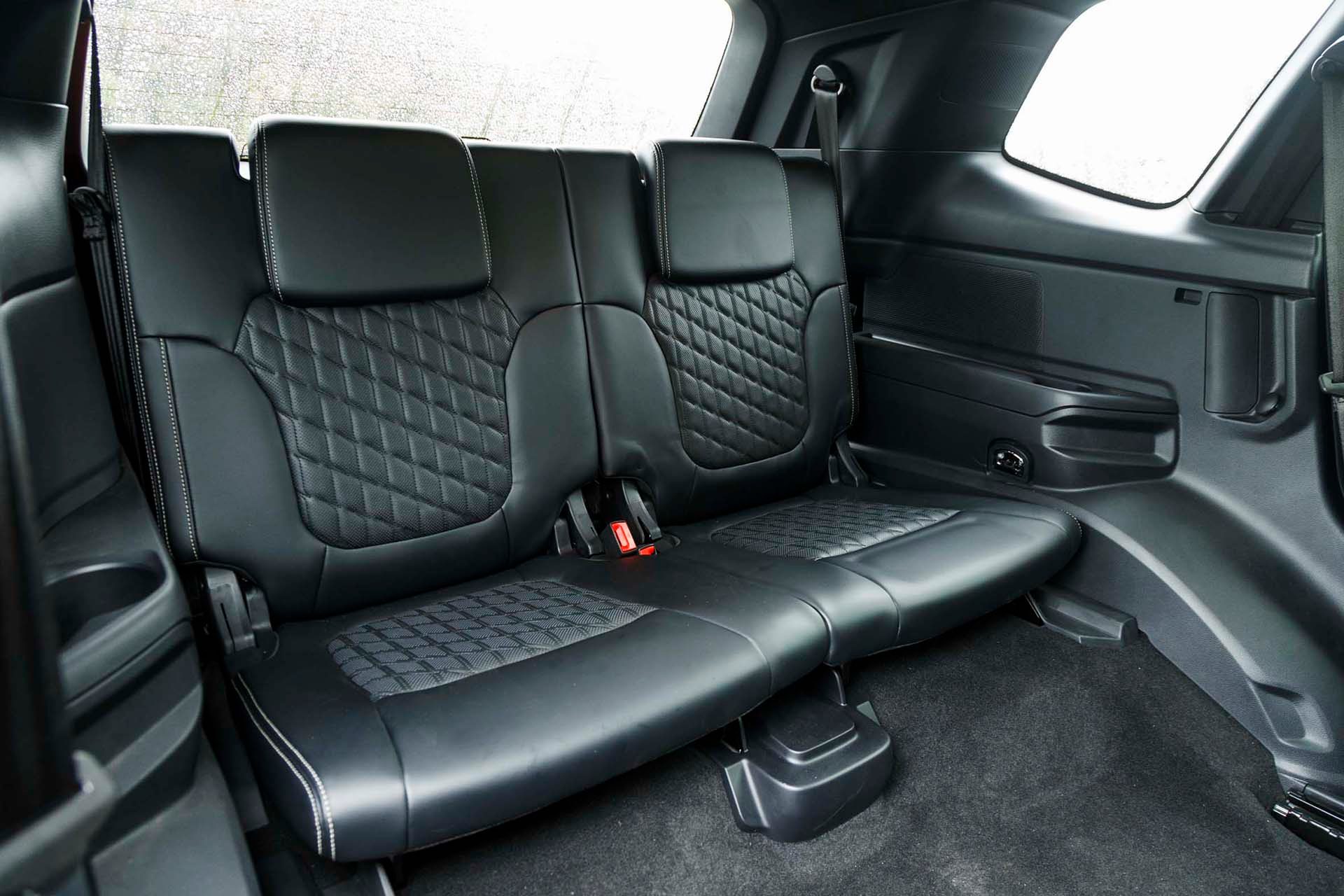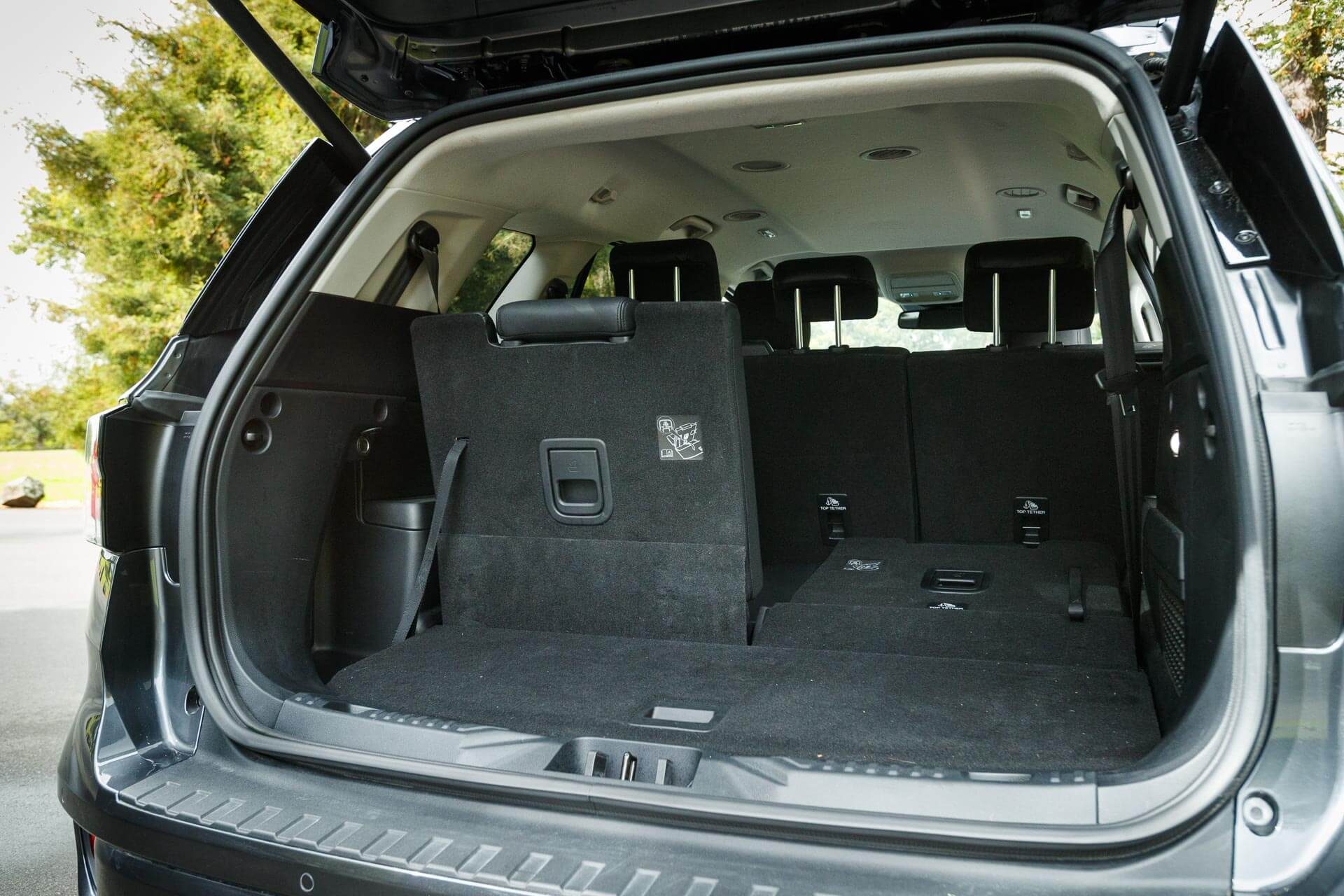Feature article
Ford Everest Review: Buying Guide
The Ford Everest 2024 is what you’d call a versatile family vehicle.

The Ford Everest 2024 is what you’d call a versatile family vehicle. Designed for both off-road adventuring and urban practicality, the Everest boasts serious credentials such as a 30-degree approach angle, 22-degree breakover angle, full-time all-wheel drive, low-range gearing, a locking differential, 800mm water wading ability and 229mm of ground clearance. Most buyers won’t need this full range of capability but will value its impressive 3500kg braked towing capacity, made more convenient with a standard tow bar. And there are seats for up to seven passengers too.
The Everest lineup begins with the Trend model at $74,990, powered by a 2.0-litre bi-turbo diesel (154kW/500Nm). The $81,490 Sport uses the same engine but adds a few extras and a blacked out look. The Platinum is $91,490 and has a 3.0-litre V6 with 184kW and 600Nm. A 10-speed automatic transmission and full-time AWD system is standard across the range.
The Platinum stands out with 21-inch alloy wheels, a chrome grille, Matrix LED headlights and a panoramic glass roof. Inside, it impresses with quilted leather trim, heated seats, ambient lighting and a B&O sound system. All variants come with comprehensive safety tech, including adaptive cruise control, lane keeping, emergency braking, reverse brake assist, traffic sign recognition, a 360-degree camera and nine airbags. Even the base Trend is well-equipped, making it a strong value proposition if you can forgo the V6.
On the road, the Everest drives as expected for a large 4x4 SUV. It’s heavy, tipping the scales at 2492kg, and this bulk shows in its handling with noticeable lean in corners. Still, the weight is balanced, and while not immune to understeer, it’s manageable. Brake feel can be inconsistent under stress, but the vehicle remains composed in most situations. Steering is light and responsive initially, though it can feel vague in wet conditions.
Off-road, the Everest performs admirably and is competent on gravel trails. Its 4A drive mode adapts the torque split for optimal traction, and the well-tuned suspension absorbs bumps and corrugations effectively. Stability control steps in only when necessary, allowing confident loose-surface driving.
It’s not ideal for city slickers to be charging around in such a big 4x4 made to conquer the wilds but such is the civility of the Everest; it works in both urban and rural environs well. In the city, the Everest proves practical. It’s based on the Ranger platform but has a relatively smooth ride thanks to coil springs and a Watt’s linkage in the rear. Manoeuvrability is aided by the light steering, short wheelbase (compared to the Ranger), and a surround view camera.
Performance-wise, the 3.0-litre V6 delivers strong midrange torque. The 10-speed auto shifts smoothly, with only a slight hesitation off the line. It’s a more torque-oriented engine than a high-revving one, rarely pushing beyond 3700rpm. Fuel economy during testing averaged in the mid 12L/100km range, while the 2.0-litre is only a little better (10-11L/100km). The difference between them is the ease in which the V6 delivers its torque just off idle, (something those who tow big loads will appreciate) and refinement; the four cylinder can send a few vibrations through the cabin along with a more audible diesel clatter.
Inside, the Everest Platinum leans towards premium, though some truck-like roots remain. The upgraded materials and stitched finishes elevate the cabin, though the seats could offer more comfort for the price. The infotainment system includes a large portrait screen and digital instrument cluster.
Space-wise, the second-row seating is roomy though adults might find the high floor uncomfortable for long trips. The third row is accessible and usable for the kids and folds easily with power controls in the Platinum. The boot is deep and wide but there isn’t much space left over if all the seats are in use. ISOFIX mounts and top tethers make it family-friendly.
Others to consider include the Toyota Prado if you’re after a 4x4 type, or for a more refined, road-oriented seven-seater, the hybrid Santa Fe is worth looking at.
Author
Other articles you might like
